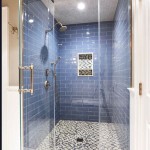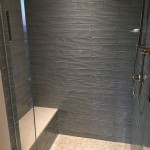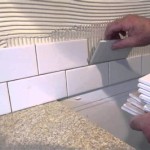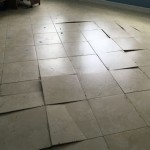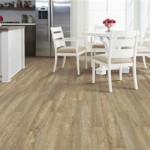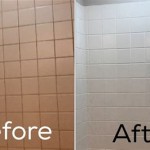Can You Put Tile On Sheetrock In A Bathroom? A Comprehensive Guide
The question of whether tile can be directly applied to sheetrock in a bathroom is a common one for homeowners undertaking renovations. The answer is complex and dependent on several factors related to building codes, the specific location within the bathroom, the type of sheetrock, and the quality of installation. Understanding these nuances is crucial to ensure a durable, waterproof, and aesthetically pleasing tiled surface.
Sheetrock, also known as drywall or gypsum board, is a widely used building material for walls and ceilings. It comprises a gypsum core faced with paper. While cost-effective and relatively easy to install, standard sheetrock is not inherently designed to withstand prolonged exposure to moisture. Bathrooms, due to their high humidity and potential for water splashes, present a challenging environment for standard sheetrock.
The primary concern when tiling in a bathroom is preventing water damage. Water can penetrate through grout lines and even poorly sealed tiles, reaching the underlying sheetrock. This can lead to the growth of mold and mildew, weakening the sheetrock and ultimately causing structural damage. In some cases, the weight of the tile adhering to compromised sheetrock increases the likelihood of tile detachment and structural failure.
Therefore, directly tiling onto standard sheetrock in areas of high moisture exposure, such as shower walls and areas directly around the bathtub, is generally inadvisable. However, under specific conditions and with appropriate preparation, tiling onto sheetrock in other areas of the bathroom might be acceptable, provided that stringent moisture mitigation measures are in place.
Understanding the Limitations of Standard Sheetrock in Wet Environments
Standard sheetrock's paper facing is highly susceptible to water damage. When exposed to moisture, the paper can delaminate from the gypsum core, causing the sheetrock to lose its structural integrity. This degradation weakens the bond between the sheetrock and any adhered material, including tile. Over time, this process can lead to sagging, crumbling, and ultimately, the need for costly repairs.
Furthermore, the gypsum core itself is porous and can absorb moisture, further exacerbating the problem. Mold and mildew thrive in damp environments, and sheetrock provides an ideal food source for these organisms. This not only compromises the structural integrity of the wall but also poses potential health risks to occupants.
The weight of the tile adds additional stress to the sheetrock. As the sheetrock weakens due to moisture exposure, it becomes increasingly difficult to support the weight of the tile, increasing the risk of tile detachment and potential wall collapse in extreme cases. This risk is amplified when using larger or heavier tiles.
Building codes often address the specific requirements for wall surfaces in wet areas of bathrooms. These codes typically mandate the use of water-resistant or waterproof materials behind tile in areas exposed to direct water contact, such as shower stalls. Failure to comply with these codes can result in failed inspections and potential legal ramifications.
Alternatives to Standard Sheetrock for Tiling in Bathrooms
Given the limitations of standard sheetrock, several alternative materials are specifically designed for wet environments and provide a more suitable substrate for tiling in bathrooms. These materials offer enhanced moisture resistance and structural stability, significantly reducing the risk of water damage and ensuring a longer-lasting tiled surface.
Cement Board: Cement board is a popular choice for shower walls and other wet areas. It is made from cement and reinforced with fiberglass mesh, making it highly water-resistant and durable. Cement board does not rot, warp, or delaminate when exposed to moisture, providing a stable and reliable substrate for tile. Proper installation of cement board involves sealing the seams with waterproof tape and thin-set mortar to create a continuous waterproof barrier.
Waterproof Gypsum Board (Green Board/Blue Board): While not as waterproof as cement board, waterproof gypsum board, often referred to as green board or blue board, offers improved moisture resistance compared to standard sheetrock. It features a water-resistant coating on the paper facing and a moisture-resistant core. While suitable for areas with moderate moisture exposure, it is generally not recommended for direct contact with water, such as shower walls, unless further waterproofing measures are implemented. Waterproof gypsum board should meet ASTM C630 standards.
Waterproof Membranes: Liquid-applied waterproof membranes and sheet membranes offer an additional layer of protection against moisture penetration. These membranes are applied directly to the substrate, creating a seamless, waterproof barrier behind the tile. They can be used in conjunction with standard sheetrock or waterproof gypsum board to provide enhanced moisture protection. When using a waterproof membrane, it is crucial to follow the manufacturer's instructions carefully to ensure proper installation and effectiveness. Proper surface preparation, including cleaning and priming, is essential for optimal adhesion of the membrane.
Proprietary Waterproofing Systems: Several manufacturers offer complete waterproofing systems specifically designed for tile installation in bathrooms. These systems typically include a range of products such as waterproof boards, membranes, sealants, and adhesives, all designed to work together to create a fully waterproof environment. These systems often come with warranties, providing added peace of mind.
Considerations for Tiling on Sheetrock Outside of Direct Water Exposure Zones
While tiling directly onto standard sheetrock in areas of direct water exposure is generally discouraged, it may be acceptable in other areas of the bathroom, such as walls away from the shower or bathtub, provided stringent precautions are taken to mitigate moisture intrusion. Several factors must be carefully considered to ensure a successful and long-lasting installation.
Proper Ventilation: Adequate ventilation is crucial to minimize moisture buildup in the bathroom. Ensure that the bathroom has a functioning exhaust fan that is used regularly during and after showers and baths. The exhaust fan should be properly sized for the square footage of the bathroom and vented to the outside. Regularly cleaning the exhaust fan helps maintain its efficiency.
Sealing and Grouting: The quality of the grout and sealant used is critical to prevent water from penetrating behind the tile. Use a high-quality, waterproof grout and sealant that is specifically designed for bathroom applications. Apply sealant along all edges where the tile meets other surfaces, such as the bathtub, shower surround, and countertop. Regularly inspect and re-seal grout lines and edges as needed to maintain a waterproof barrier. Consider using epoxy grout, which is more water-resistant and stain-resistant than cement-based grout.
Surface Preparation: Proper surface preparation is essential for ensuring a strong bond between the tile and the sheetrock. Ensure that the sheetrock is clean, dry, and free of dust, grease, and other contaminants. Apply a suitable primer to the sheetrock to improve adhesion. Consider using a bonding agent to further enhance the bond between the tile adhesive and the sheetrock.
Tile Selection: The type of tile used can also impact the likelihood of moisture intrusion. Smaller tiles with more grout lines are generally more prone to water penetration than larger tiles with fewer grout lines. Choose tiles that are appropriate for bathroom use and resistant to moisture. Consider using porcelain or ceramic tiles, which are naturally water-resistant.
Professional Consultation: It is always advisable to consult with a qualified tile installer or contractor to assess the specific conditions of the bathroom and determine the best course of action. A professional can evaluate the existing sheetrock, identify potential problem areas, and recommend the appropriate materials and installation techniques to ensure a successful and long-lasting tiled surface. They can also ensure that the installation complies with all applicable building codes.
In summary, while tiling directly onto standard sheetrock in high-moisture areas of a bathroom is generally not recommended due to the risk of water damage, it might be acceptable in other areas if appropriate precautions are taken. Alternatives like cement board, waterproof gypsum board, and waterproof membranes offer superior protection against moisture and are generally preferred for tiling in wet environments. Proper ventilation, quality sealing and grouting, thorough surface preparation, and appropriate tile selection are crucial for mitigating moisture intrusion and ensuring a durable and aesthetically pleasing tiled surface.

Tile Over Drywall Showers A Common But Bad Practice Scott Hall Remodeling
Can You Put A Ceramic Wall Tile On Sheetrock For Basement Shower Quora
What Happens If You Tile Over Drywall In A Shower Quora

Can You Tile Over Drywall Master Building Materials Blog

How To Tile Over Sheetrock Doityourself Com

Can You Tile Over Drywall Master Building Materials Blog

Replace Bathroom Drywall With Tiled Walls Fix It Handyman

The Complete Guide To Installing Tile On Shower Or Bathtub Walls

Waterproof Bathtub Shower Walls Over Drywall

The Tile Journal Of Hamilton In Woodstock Ga
Related Posts

